3D printing is that much of a revolutionary technology today that it can be used in several different ways for several different purposes. Gaming, prosthetics, you just name it. Despite the vast variety of uses and applications of 3D printing, one thing is constant – you need a 3D printer filament. This leads us to one of the most relatable topics of discussion in the world of 3D printing – “PLA vs ABS.”
When it comes to filaments for 3D printing, PLA and ABS are the go-to filaments. This is not much of a debate. What can be debated, though, is which is more suitable for printing. To answer this, one needs to consider what they are, the difference between PLA and ABS, their features, properties, pricing, and their applications. This is exactly what we will do below.
What Are PLA and ABS?
Before we dive into PLA and ABS filaments proper, it makes sense to consider what 3D filaments are themselves. A 3D printer filament is a thermoplastic feedstock used for 3D printers.
What Is PLA Filament?
PLA is an acronym for Polylactic acid. It is a type of thermoplastic made from plant starch by the fermentation of the sugars obtained from corn, cassava, or sugarcane. The fermentation process will convert the sugars into lactic acid, which is then processed into polylactic acid.
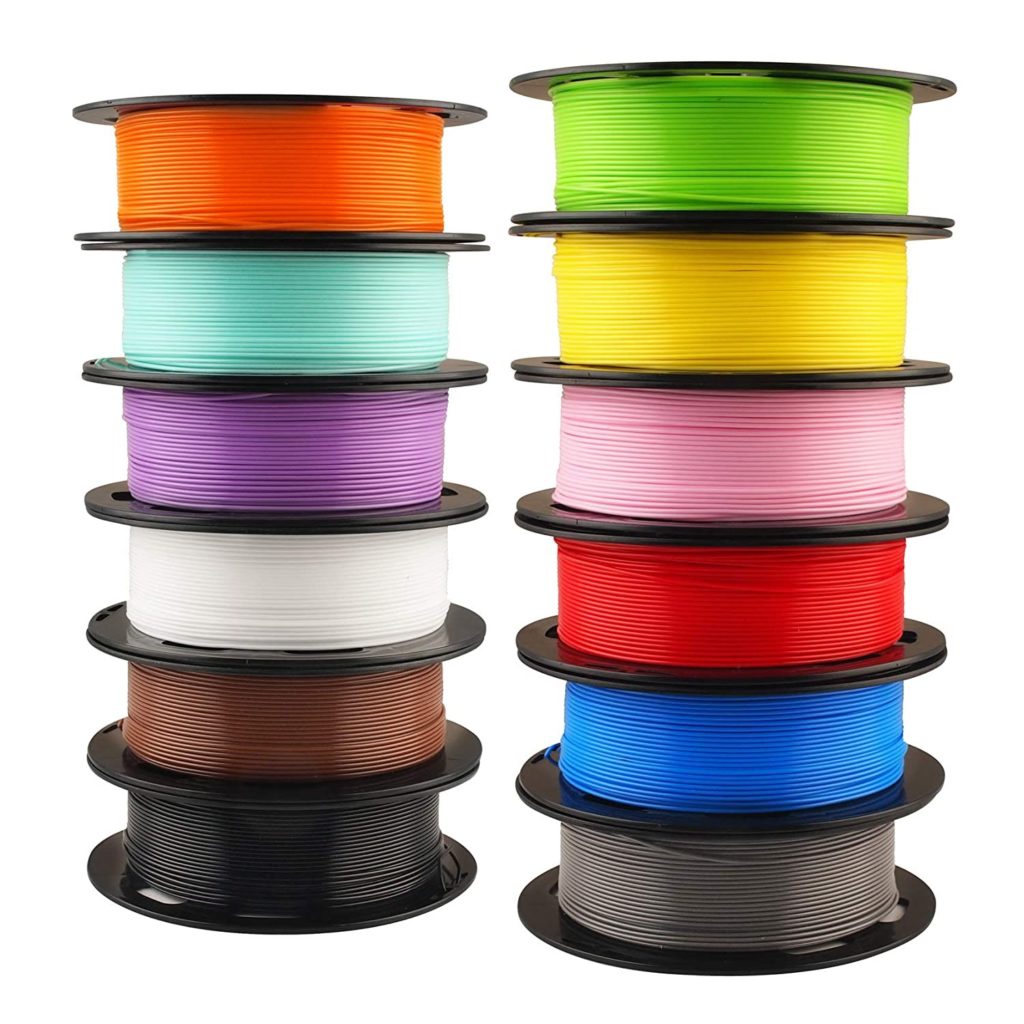
From this, it is obvious that PLA is reasonably environmental-friendly as it is biodegradable, sustainable, and renewable. All of these contribute to its widespread use today. Then there’s also the fact that it is easy to use and relatively inexpensive to make.
PLA is suitable for complex prints and is particularly common in prototyping and architectural mockups. It is also usually the standard printer filament for users new to 3D printing.
What Is ABS Filament?
ABS is an acronym for Acrylonitrile Butadiene Styrene. ABS is one of the first plastics to be used for FDM 3D printing, and it comes in the form of a long filament wound around a spool.
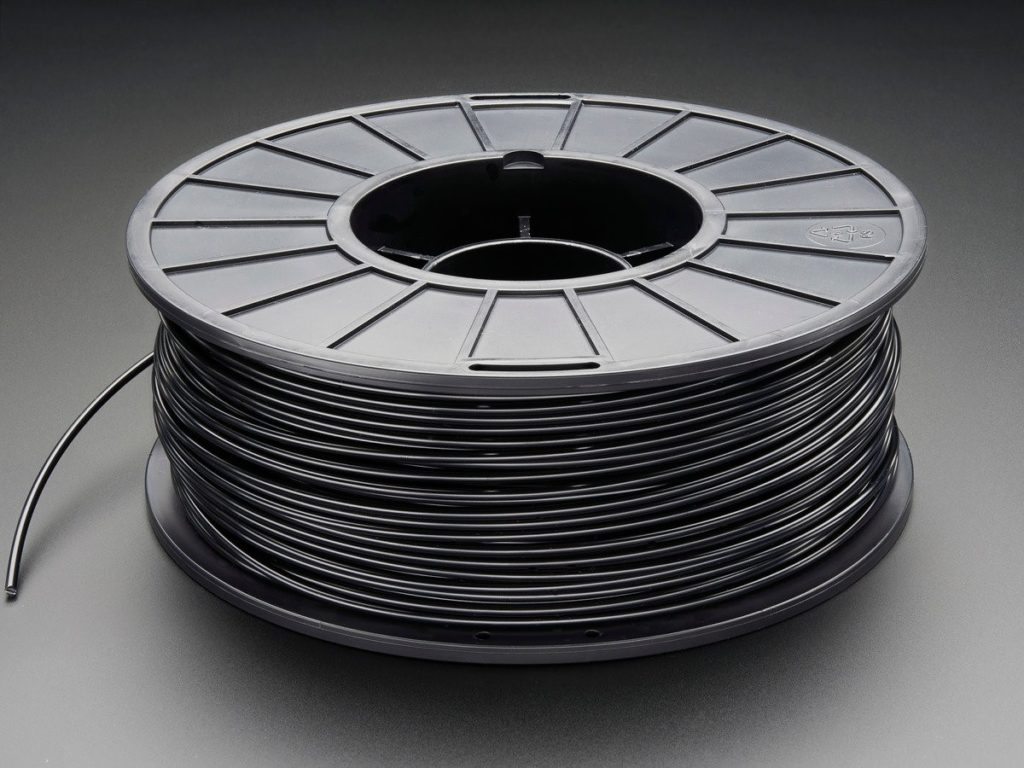
It is commonly used in rapid prototyping and additive manufacturing environments to challenge products for their resistance and durability. ABS is known for being resistant to shattering when dropped or hit and is most identifiable with Lego bricks. Like PLA, it is also a thermoplastic filament. Unlike PLA, however, it isn’t as easy to use, especially for beginners.
PLA vs ABS: Properties
The difference between PLA and ABS boils down to the properties of each. The table below will provide a brief overview of these properties and compare the two filaments.
| Property | PLA | ABS |
| Strength | Medium | High |
| Durability | Poor | Very durable |
| Printability | Better | Requires more effort to print |
| Temperature resistance | Poor | Good |
| Shrinkage | Minimal | Prone to shrinkage |
| Biodegradability | Biodegradable under the right conditions | Not biodegradable |
| Glass Transition Temperature | 60°C | 105°C |
| Print bed temperature | 20 – 60°C (not necessary to use) | 80 – 110°C |
| Density | 1.3 g/cm3 | 1.0 – 1.4 g/cm3 |
| Melting point | 173°C | No melting point (amorphous) |
| Flexibility | Low | Medium |
| Print temperature | 180 – 230°C | 210 – 250°C |
PLA vs ABS: Features
Features of PLA
One of the most heralded features of PLA is its biodegradability.
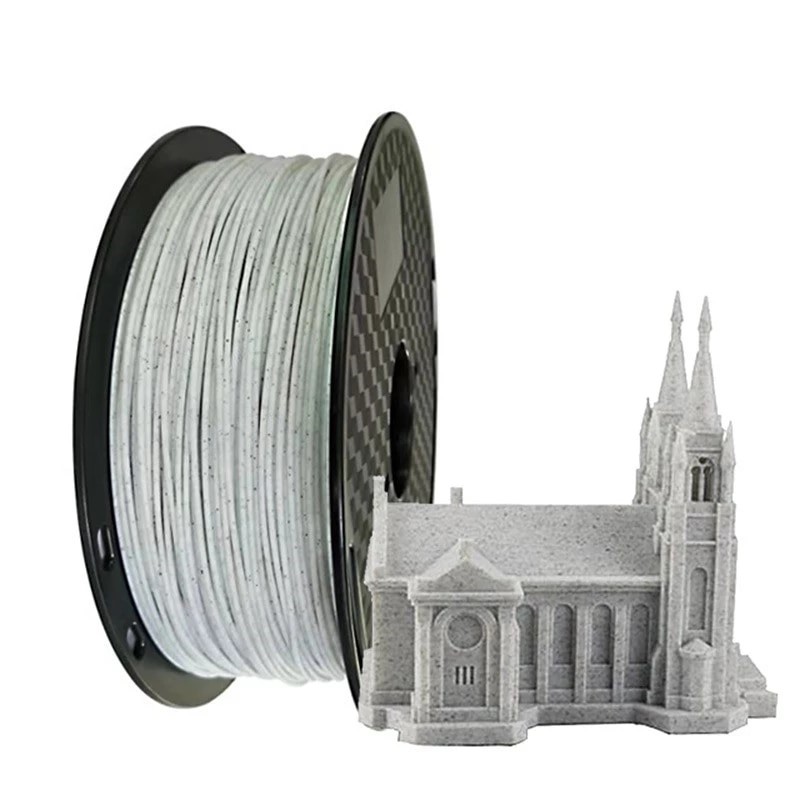
Unlike several other 3D printing filaments, PLA will biodegrade under the right conditions. These conditions are 50 days in industrial composters and four years in water. Attaining these conditions isn’t exactly straightforward or even outrightly possible at home but can be done commercially in industries.
PLA is well known for its aesthetics and is typically the filament of choice if the aesthetic appearance of the 3D print is the priority. The primary reason for PLA’s elite aesthetics is the lower printing temperature required to print with. Aside from aesthetics, the lower printing temperature also makes PLA easier to print with.
In the PLA vs. ABS 3D printing debate, the minimal shrinkage and warping are usually huge points for PLA filaments. While the low printing temperature plays a part, the fact that PLA becomes sticky when heated due to its constituent natural sugars also means models stick to the print bed, minimizing shrinkage.
Perhaps the most underrated feature of PLA is its nice scent. Can you guess why? The natural sugars, of course! The scent is often described as candy or honey-like depending on the type of PLA and its sugars.
Features of ABS
While one of the downfalls of PLA is its temperature resistance, this is one of the strong points of ABS, as it can withstand about 85°C.
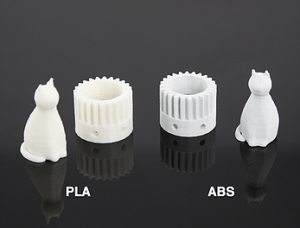
ABS is amorphous; therefore, it lacks a melting point, but it does have a glass transition temperature around 105°C. By implication, it will be suitable for printing things that have to be heated and reheated at relatively high temperatures.
We have established that ABS can withstand higher temperatures, but users should be wary as it is also more prone to warping and shrinkage when cooling. This makes it more difficult to print with.
Durability is perhaps the main distinguishing feature of ABS. It is more temperature resistant, more water-resistant, can handle more weight and stress, and is simply tougher than PLA. This feature is usually referred to when deciding between ABS or PLA plastic filaments. ABS can take blows and vibrational impacts that PLA cannot.
Tips on Choosing between PLA vs ABS Filaments
– What Are You Printing?
Perhaps the very first question you should ask yourself before making a decision is what you intend to print. PLA and ABS 3D filaments are undoubtedly great choices compared to other filaments in the industry, but they both have their specialties.
PLA is perfect for models printed mainly for aesthetics, like many architectural works, while ABS is for prints that need to be durable or strong, like phone cases.
– Where Are You Going to Be 3D Printing?
The location the actual printing will occur is another important factor to consider. PLA filaments have a nicer scent than ABS filaments. The gulf in acceptability of the scent is wider than you can imagine. ABS filaments release more toxic and bad-smelling fumes. This smell can tend towards unbearable at times.
Therefore, you might want to stick with PLA filaments if you’re going to be printing in offices or quite populated rooms.
– Environmental Impact
If you care so much about the impact on the environment, then PLA filaments are the way to go. While both filaments can be recycled, only PLA filaments are biodegradable, albeit under strict conditions.
PLA vs ABS Filaments: Applications
PLA and ABS are both thermoplastics and are both the commonest FDM 3D printer filaments. However, because of their quite different properties, they have different applications.
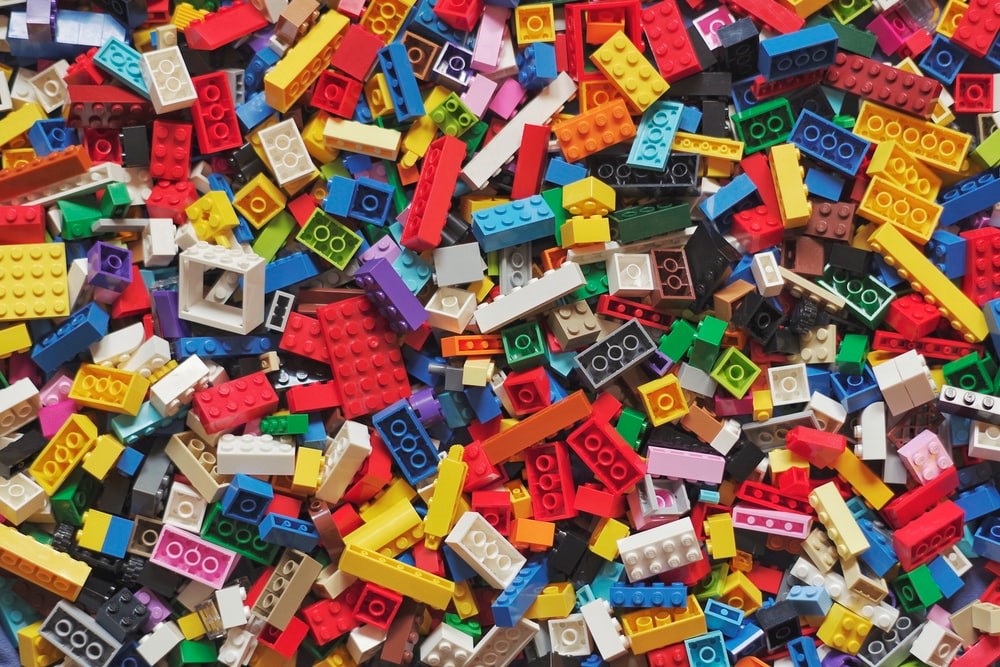
PLA filaments are perfect when the primary focus of the user is aesthetics, particularly with small and complex details. This makes them suitable for prototypes and consumer electronics applications. PLA, because of its nice smell, is ideal for use in offices. Beginners also prefer PLA filaments because they are easier to use. PLA is often used for low-wear toys, containers, architectural mockups, etc.
ABS filaments, on the other hand, are perfect when the print needs to be tougher, stronger, more heat and water-resistant, and more resistant to corrosion. This stems from its high durability and heat resistance. ABS is more relevant for technical purposes and moving parts. ABS is often used for suitcases, phone cases, Lego bricks, etc.
PLA vs ABS Filaments: Pricing
Both filaments have similar pricing options and are very affordable. 10-meter spools of both PLA and ABS go for around $5. The price difference between both filaments is usually insignificant. The major factors that affect the price difference are the brand, color, and shipping costs.
RapidDirect’s 3D Printing Services
RapidDirect is there for all your 3D printing services. We offer competitive FDM, SDA, SLS services, and a wide range of material and finishing options. That’s not all. Our team of well-trained experts is always ready and willing to offer technical support, design guides, and case studies to you. This will come in particularly handy when settling between PLA vs ABS.
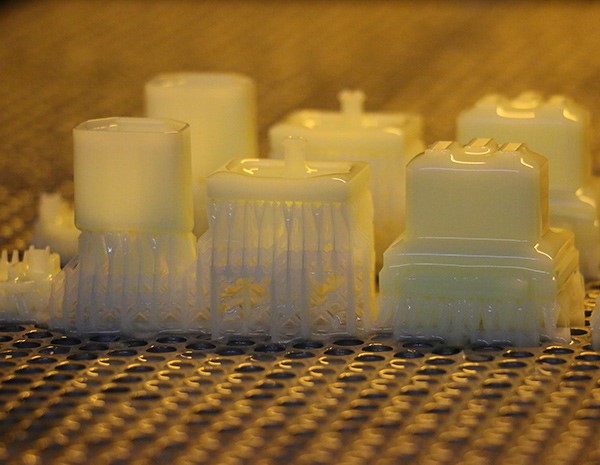
You will get rapid and cost-effective quotations, short lead time, and high-quality services irrespective of the printer filament you choose. What we are trying to say, in essence, is – PLA or ABS? We’ve got it all at Rapiddirect, visit us today!
Conclusion: PLA vs ABS 3D Printing?
We set out to settle the debate between PLA vs ABS filaments. So, which has the edge? Well, there is no right answer to that question. It all depends on the needs of whoever is printing. The whole point of this article was to highlight the strengths, weaknesses, and features of each to make it easier for users to know which to choose.
PLA is commoner than ABS, especially among beginners, because of its ease of use, nice smell, aesthetics, and variety of styles. PLA filaments are also biodegradable under the right conditions, making them more environment-friendly.
However, its heat resistance and durability aren’t the most ideal. In such cases, ABS is the filament of choice. Also, ABS filaments are not biodegradable under any condition.
Therefore, if you need a filament for easy printing with a high aesthetic edge, you need PLA. Conversely, if what you need is a more durable and technically functional filament, you should consider ABS.


